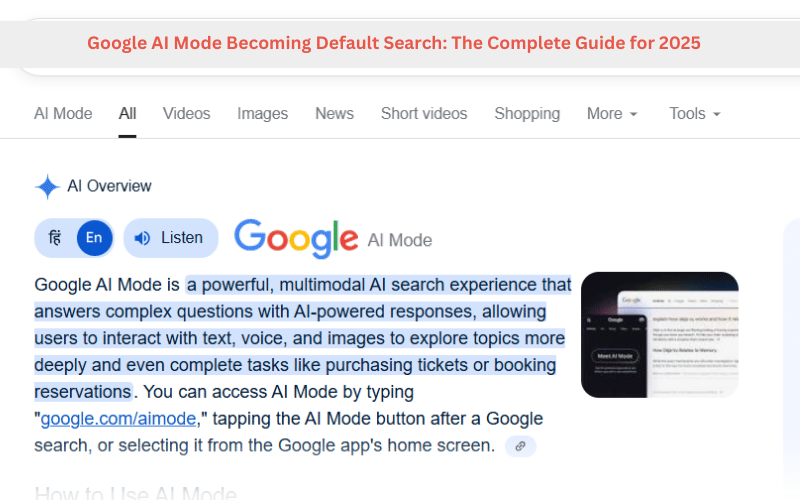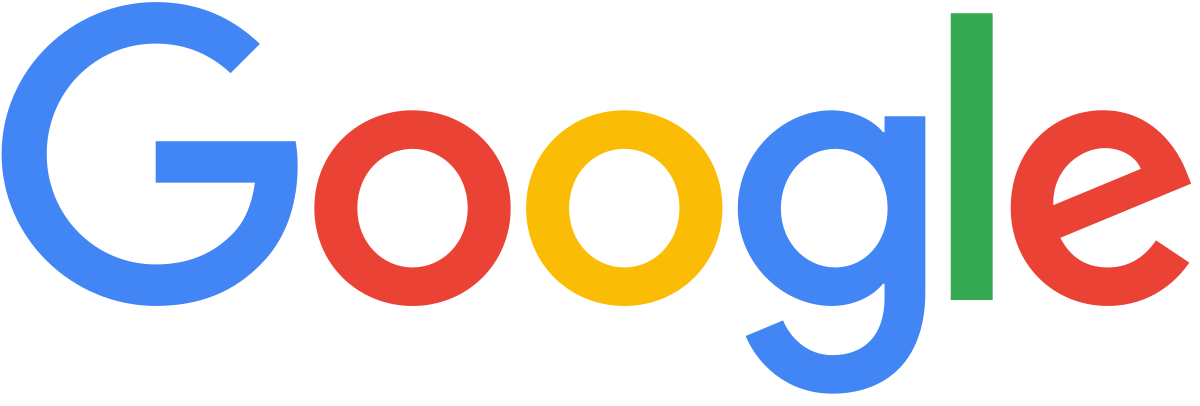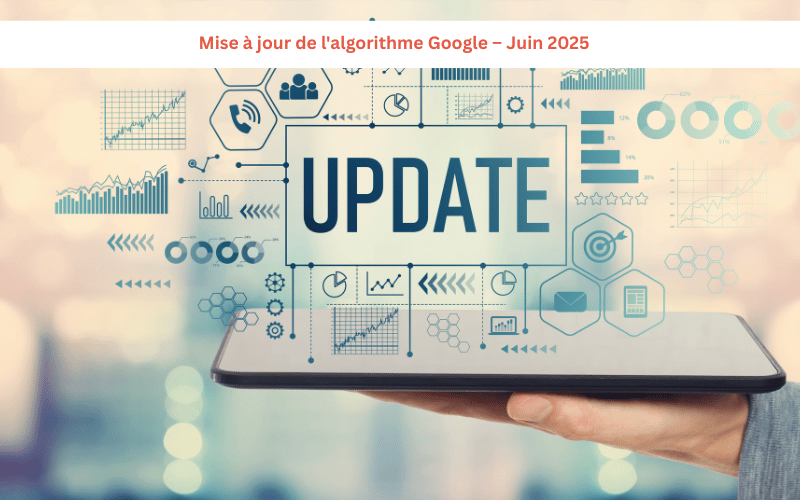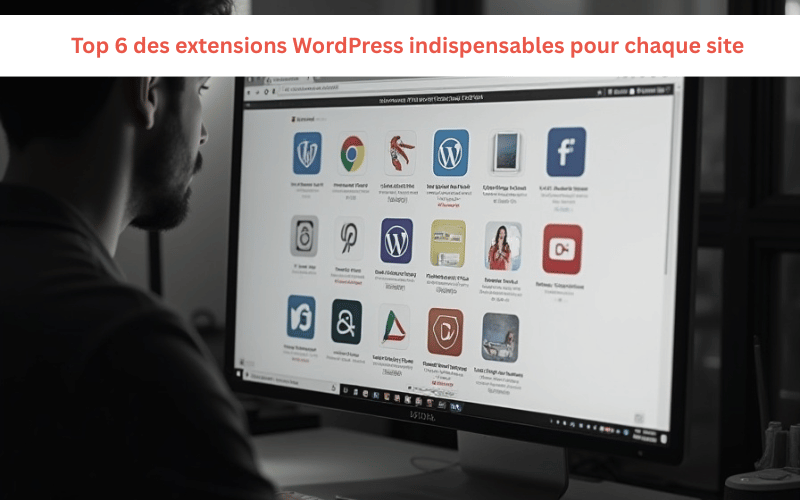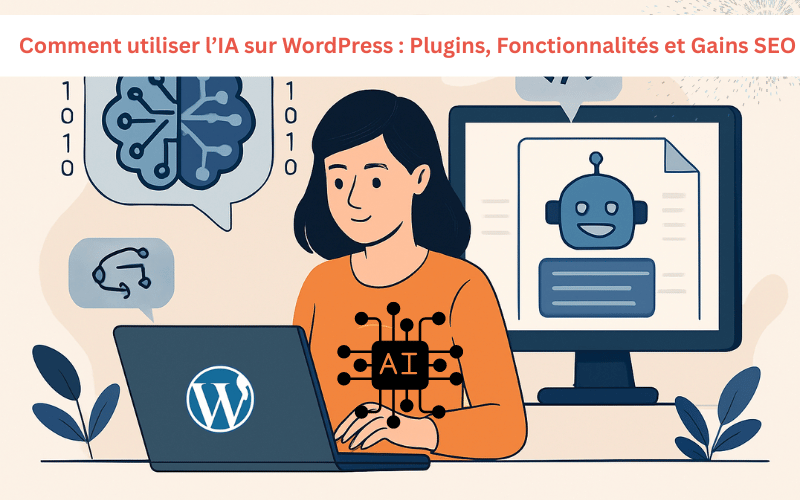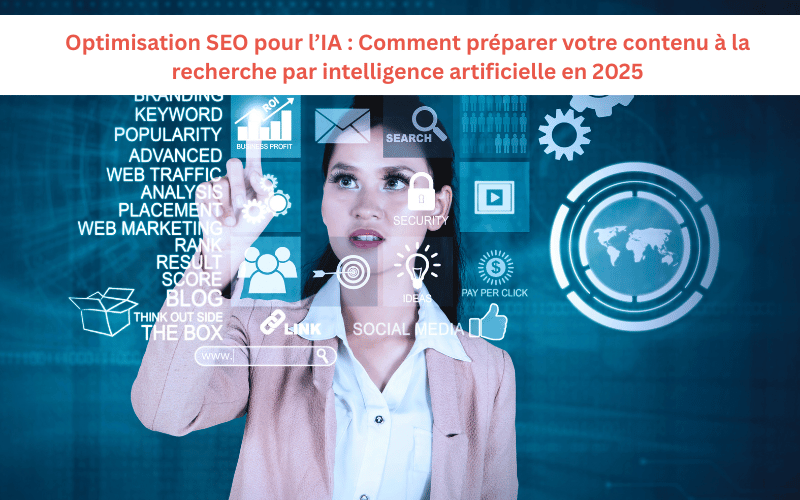Search is changing rapidly, and 2025 has brought perhaps the biggest shift in how billions of people interact with Google. For years, we typed a query, looked at ten blue links, and picked the most relevant result. But with Google AI Mode now becoming the default for search, the experience has transformed. Instead of long lists of links, users increasingly get AI-powered answers, summaries, and recommendations right inside the results page.
This evolution is shaping how businesses, users, and digital marketers think about visibility, traffic, and content. Traditional search engine optimization tactics are no longer enough. We are officially in the era of AI based SEO, where optimizing for AI-driven search responses is as critical as ranking in organic results.
This guide will walk you through everything you need to know about AI Mode: how it works, why Google made it default, its impact on SEO and internet marketing, and how businesses and marketers can adapt strategies to thrive under this new paradigm.
Quick Answer: What is Google AI Mode in 2025?
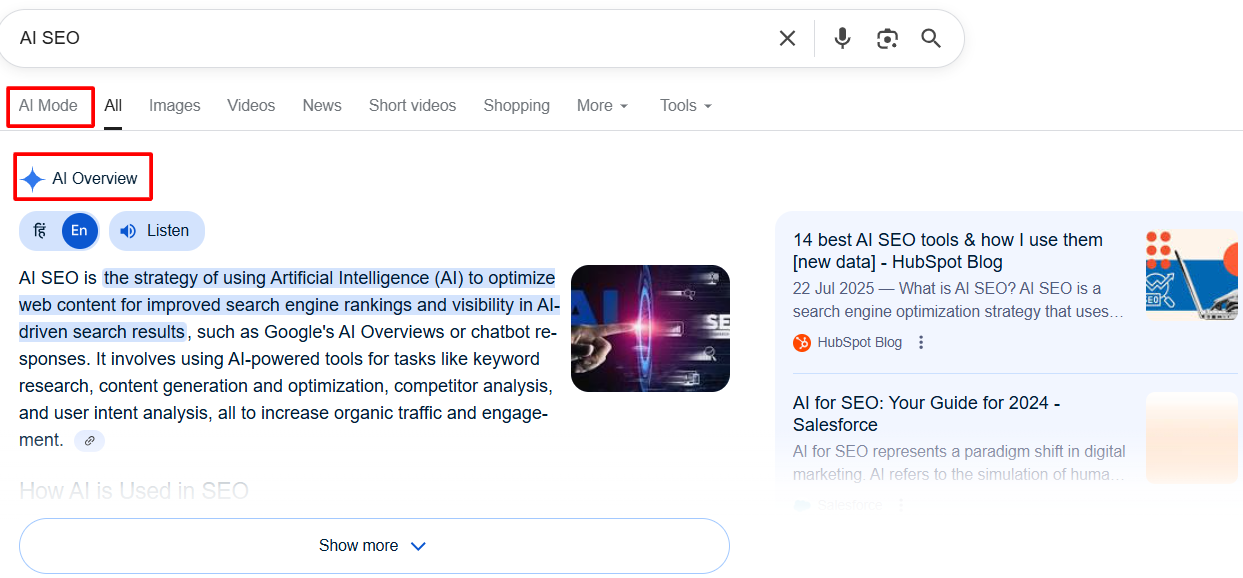
Google AI Mode is the new default search experience powered by Gemini AI, where results appear as AI-generated overviews instead of just links. It provides quick summaries, product comparisons, multimodal inputs (text, image, voice), and conversational answers, reshaping SEO, traffic, and digital marketing strategies.
What is AI Mode?

AI Mode is a search experience in which Google’s AI model, currently Gemini powered search becomes the default way of presenting results. Instead of only offering links to relevant websites, Google now generates an AI overview at the top of most queries. This overview summarizes information, pulls insights from multiple sources, and often answers the query without the user ever clicking through to a website.
This capability started in beta versions of Google Search in 2023 and gradually expanded. By 2025, AI Mode is no longer an “optional experiment.” It is the standard search interface millions encounter daily.
Think of AI Mode as your intelligent assistant embedded into Google. It can:
- Generate summaries for complex questions.
- Provide comparisons (products, services, destinations).
- Understand conversational queries like “What’s the best laptop under 60k for coding and gaming?”
- Offer multimodal search by combining text, images, voice, and sometimes even video input.
While this enhances user experience, it significantly changes the game for businesses depending on search traffic.
How AI Mode Works (Technology Behind It)?
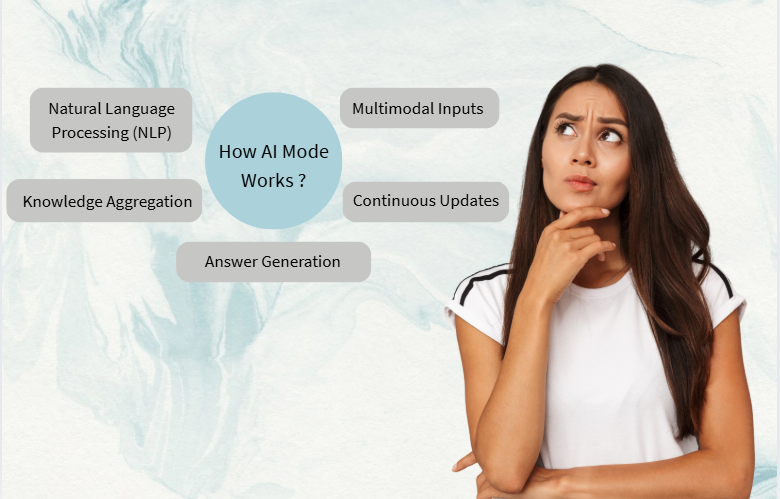
The backbone of Google’s AI Mode is its Gemini large language model, an evolution of Bard with advanced reasoning, summarization, and multimodal capabilities. This model powers the Google Search AI update by generating contextually rich answers directly on the search page.
Here’s a simplified breakdown of the technology:
- Natural Language Processing (NLP): Google interprets the meaning behind user queries, not just keywords. It identifies the search intent, whether it’s informational, transactional, or navigational.
- Knowledge Aggregation: Using AI, Google scans multiple high-authority sources in real time, organizes the most relevant content, and cross-checks facts.
- Answer Generation: Instead of pointing you to a site, it composes a human-like summary of findings.
- Multimodal Inputs: With multimodal capabilities, you can upload a photo of a product, combine it with text like “find similar but cheaper options,” and get AI-generated shopping suggestions.
- Continuous Updates: Every Google core update 2025 upgrades and fine-tunes AI Mode, ensuring more accurate summaries and a better understanding of niche expert content.
Essentially, Google isn’t only indexing websites, it is “understanding” them to teach its AI system how to compose useful answers.
Ready to see how Google AI Mode impacts your website?
Get a Free SEO Audit and discover where your content stands in AI-powered search results.
Why Google Is Making AI Mode the Default?
At first, many asked: Why replace the traditional search model that has worked for years? The answer lies in user behavior and competition.
- User Demand: Today’s internet users crave speed and convenience. People want instant, accurate answers without the hassle of sifting through multiple links or web pages. The rise of zero-click searches is a clear indicator. According to research conducted in late 2024 by SparkToro, nearly 70% of all Google queries ended without a click on any external website. This number reflects a significant shift from past years and highlights users’ preference for immediate responses delivered directly on the search results page.
- Rise of Chatbots: The explosion of AI chatbot technologies such as ChatGPT, Bing AI, and others has dramatically changed user behavior. These AI systems offer conversational, highly interactive experiences that blur the lines between searching and chatting. To maintain its market dominance, Google had to innovate beyond traditional search results. By embedding AI responses through Gemini-powered search, it transformed the search engine into a more intelligent, conversational assistant, capable of answering nuanced and context-rich queries effectively.
- Efficiency: AI Mode provides users with concise, well-structured summaries that save time, especially for complex or multi-layered queries. Instead of opening multiple tabs, reading through dense content, or filtering unreliable sources, users get synthesized information in seconds, enabling faster decision-making and learning. This efficiency is a key driver behind AI Mode’s popularity.
- Monetization: Google’s AI Mode also opens up new revenue streams. By integrating shopping recommendations, product ads, and affiliate-like suggestions directly within AI-generated summaries, Google increases the chances of user engagement with promoted content, all without disrupting the seamless search experience. This approach not only boosts ad conversion rates but also diversifies Google’s monetization beyond traditional PPC ads. In 2024, digital advertising revenues attributed to AI-driven search interfaces increased by over 20% year-over-year, illustrating the effectiveness of this strategy.
In sum, Google’s move to AI Mode as the default reflects a strategic alignment with evolving digital behaviors and growing competitive pressures while offering enhanced monetization opportunities.
So, going default was a strategic move to maintain market leadership while meeting growing user expectations.
What does this mean for Users?
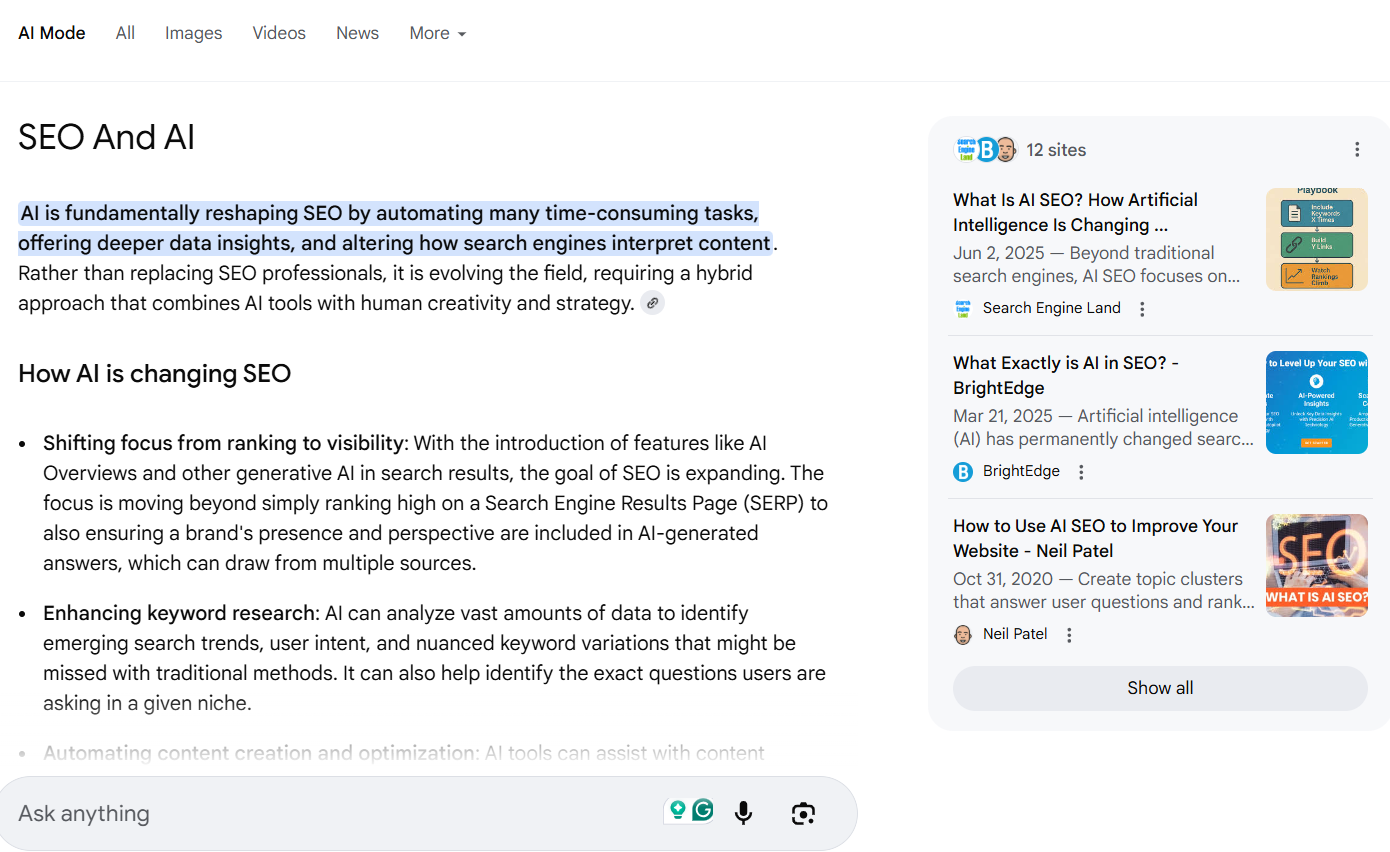
For everyday internet users, AI Mode feels like having a personal assistant who can digest the web for them. But there are trade-offs.
Benefits for users:
- Quick, summarized answers in plain language.
- Better contextual relevance search feels conversational, not robotic.
- Easier discovery through multimodal inputs like images and video.
- Reduced the need to open multiple tabs for research.
Challenges for users:
- Less exposure to diverse viewpoints can oversimplify summaries.
- Transparency issues: Google doesn’t always cite every source in full.
- The “Google Zero click problem”: fewer incentives to explore original publishers.
Users enjoy convenience, but businesses that depend on organic traffic are feeling the pinch.
Implications for SEO & Marketers
The rise of AI Mode has sent shockwaves through the SEO and digital marketing community. The old approach of simply ranking high in the SERP is no longer sufficient.
Key implications include:
- Website traffic from AI results may decline: With AI overviews answering queries directly, fewer clicks go to websites.
- Shift in keyword strategy: Optimizing for exact keywords matters less than aligning with search intent in AI mode. Google extracts context and meaning, not raw keyword matches.
- AI search vs traditional search: Traditional search rewarded link-building and keyword optimization. AI-based search rewards depth, authority, and contextual richness.
- New competition for visibility: Businesses may need help from an AI SEO agency or a search engine optimization agency that specializes in optimizing content for AI-generated answers.
- Opportunities for branding within AI Mode: Google sometimes highlights source citations or embeds snippets, getting featured here can boost credibility, even if click-throughs drop.
Overall, this evolution signals a disruptive shift in web marketing services: quality, context, and relevance are king.
AI Search vs Traditional Search (2025)
| Factor | Traditional Search | Google AI Mode (AI Search) |
| Results Format | List of links | AI-generated summaries + citations |
| Click Behavior | Users click multiple sites | Fewer clicks (zero-click searches) |
| Optimization Focus | Keywords + backlinks | Entities, context, semantic content |
| Content Visibility | SERP rankings | AI Overviews + citations |
| User Experience | Self-directed browsing | Conversational, assistant-like |
SEO Strategy: How to Adapt?
Adapting to AI Mode requires rethinking digital strategies from the ground up. Below are actionable tactics:
- Content Structure and Depth: Create in-depth, authoritative guides that answer multiple sub-questions around a topic. This increases the chances of being cited by AI overviews.
- Optimize for Entities and Topics, not Just Keywords: AI does semantic understanding. Use LSI keywords and related terms that provide more context.
- Schema Markup and Structured Data: Implement schema to help Google “read” your site. FAQs, How-to, and Product schema can improve chances of inclusion.
- E-E-A-T Signals (Experience, Expertise, Authoritativeness, Trust): Highlight author expertise, cite sources, and build authoritative links. AI values verified expertise.
- Multimodal Content: Since Google is moving toward multimodal search, integrate visuals, infographics, short videos, and podcasts alongside text.
- Focus on Long-tail Queries: AI overviews often cover broad topics, but long-tail and niche searches still drive traffic. Write content targeting highly specific needs.
- Collaborate with Agencies: Partnering with an AI SEO agency or a well-versed internet marketing agency can ensure strategies stay aligned with evolving AI search behavior.
Recommended AI SEO Tools in 2025:
- Surfer SEO with AI Writing – context-driven optimization.
- Semrush AI Writing Assistant – integrates AI with SEO.
- Rank Math Content AI (WordPress) – semantic SEO plugin.
- Shopify Magic AI – auto product descriptions.
- Jasper AI – AI content creation for long-form blogs.
Monitoring and Analytics in the AI Mode Era
A critical challenge for marketers is measuring performance in AI Mode. Traditional analytics focusing on CTR (click-through rate) and rankings don’t tell the full story anymore.
Here are ways to monitor visibility:
- AI Citation Tracking: With AI Mode summarizing responses, direct clicks to websites may decline. However, citation visibility itself holds significant value. New tracking tools now monitor when and how often your content gets referenced in AI overviews. Being listed in these citations can build authority, trust, and brand recognition, even if the traffic is lower. Monitoring frequency of mentions helps marketers evaluate whether their content aligns with Google’s preferred sources.
- Traffic Attribution: Traditional analytics often blend all search traffic together, but in the AI-first landscape, it’s critical to differentiate. Advanced analytics platforms help identify website traffic originating from AI results versus traditional organic clicks. This allows businesses to measure the unique value of AI citations and understand how much traffic loss or gain comes specifically from AI-generated overviews.
- Zero Click Impact Analysis: One of the most pressing challenges is the Google zero-click problem, when users get their answers directly on Google without visiting a website. Tools now track changes in impressions versus actual site visits, helping businesses calculate how much potential traffic is being “absorbed” by AI Mode. This analysis can guide content strategies to reclaim visibility, perhaps through more multimedia formats or long-tail queries.
- Engagement Metrics: Since fewer clicks may arrive, every visitor is more valuable than ever. Maximizing dwell time, content quality, and repeat visits becomes a priority. Measuring bounce rate, time on page, interaction with multimedia, and social shares helps determine whether your content is engaging enough to encourage return readership despite declining traffic numbers. Strong engagement signals also feed back into Google’s algorithms, improving chances of being cited again in AI overviews.
Top Monitoring Tools in 2025:
- Search Console AI Insights (2025 update)
- Ahrefs AI Visibility Tracker
- SparkToro AI Citation Monitor
- Similarweb Zero-Click Analytics
Expect new tools (and Google Search Console updates) in 2025 to reflect the AI era.
Take the guesswork out of AI-based SEO.
Get a Free Audit and identify how your content can stay visible in Google’s AI overviews.
Best Practices for Content Creation
Creating content optimized for Google AI Mode requires a blend of traditional SEO skills and an AI-focused strategy. Follow these best practices:
- Answer Questions Directly: Include short, clear definitions and summaries within your content. These snippets are highly referenceable by AI.
- Depth and Nuance: Go beyond surface-level content. The AI recognizes authority by pulling from rich, detailed content.
- Conversational Writing: Since AI overviews Google delivers content conversationally, align your tone with natural dialogue.
- Content Optimization for AI Search: Frequently update articles with new data, visuals, and context so they remain relevant.
- Mobile and Voice Readiness: AI Mode enhances voice results. Ensure answers are optimized for conversational/voice style questions.
- Use Embedded Media: Include charts, images, and infographics for multimodal relevance.
Challenges & Concerns
While AI Mode creates opportunities, it also raises real concerns:
- Traffic Decline: Many publishers worry about shrinking website traffic, as AI answers keep users engaged directly on Google rather than clicking through. This decline threatens ad revenue and audience growth strategies.
- Bias & Accuracy: AI-based summaries are only as good as the datasets they are trained on. If the sources are biased or outdated, misinformation can spread quickly. Correcting errors can be difficult due to limited transparency in the system.
- Transparency: Businesses may not know why their content is or isn’t being cited. Without detailed feedback, it becomes hard to fine-tune optimization strategies effectively.
- The Google Zero Click Problem: Already a significant issue before AI Mode, zero-click results are expected to increase further. Users may get answers instantly without exploring diverse perspectives from original publishers.
- Monetization Pressure: Small publishers that rely heavily on search-driven traffic for ad revenue or affiliate sales may struggle to survive in the AI-first environment.
- Dependence on Agencies: To navigate the new landscape, companies may need the expertise of AI SEO agencies or a specialized search engine optimization agency. This dependence raises costs, particularly for small and medium-sized businesses, but may become unavoidable for maintaining visibility.
Want Customized strategies for your business?
Book a Call with our SEO specialists to future-proof your online presence in the AI era.
Conclusion
The shift to default Google AI Mode marks a defining moment for the search landscape in 2025. For users, the convenience of instant, accurate, AI-generated answers is transformative. For businesses and marketers, it brings both challenges and opportunities.
Old SEO habits will not be enough in the AI-first world. Strategies must focus on semantic optimization, authority, multimodal content, and smart collaboration with specialized AI SEO agencies, internet marketing agencies, or web marketing services.
From AI search vs traditional search to handling the Google Zero click problem, the road ahead requires adaptability and innovation. But one fact is clear: AI-driven search is not a passing trend; it’s the reality of modern internet discovery.
Businesses that embrace content optimization for AI search, experiment with new formats, and closely monitor visibility will thrive in this transformed landscape. Those who resist may find themselves left behind.
